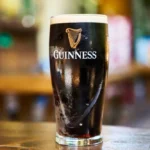
A laser is a device that emits light through an optical amplification process based on the stimulated emission of electromagnetic radiation. The word “laser” is an acronym for “light amplification by stimulated emission of radiation”. It stimulates atoms or molecules to emit light at particular wavelengths and amplifies that light, typically producing a very narrow beam of radiation.
The first laser was built by Theodore H Maiman in 1960 at Hughes Research Laboratories and was based on the theoretical work of Charles Hard Townes and Arthur Leonard Schawlow.
In 2016, scientists created a new type of microlaser, smaller than a red blood cell, which could lead to innovations in medical imaging.
The strength of early lasers was measured in ‘Gillettes’ which was a measure of how many razor blades a laser beam could penetrate.
The world’s most powerful laser, China’s Superintense Ultrafast Laser Facility (SULF), fired a single pulse equivalent to 5.3 petawatts — 5.3 quadrillion watts in 2016.
The world’s most powerful lasers can direct as much power as a hydrogen bomb.
The world’s largest laser, California’s National Ignition Facility (NIF), is about the size of three football fields.
The first commercial toy to use laser technology was a phaser gun which featured on the show Star Trek and produced a very weak laser beam.
Three scientists shared the 1964 Nobel Prize for work leading to the first lasers, but grad student Gordon Gould designed one before the laureates — one of whom was also his adviser. Gould sued and finally received patent rights in 1977. A fifth scientist actually built the first working laser, in 1960.
The ability of lasers to focus light with intense power at very precise areas makes them excellent tools for cutting, welding and even performing surgery on human beings.
Astronomers use lasers to measure real-time turbulence in Earth’s atmosphere.
Laser cutting equipment uses mirrors and lenses to focus a highly concentrated beam onto materials to cut them very accurately.
Astronauts on the Apollo 11 space mission in 1969 used a laser to measure the distance between Earth and the moon.
Laser cutting equipment is highly accurate and can be used to engrave to a microscopic level.
Lasers are grouped into specific classes, 1-5, for levels of danger. If you reach level 5, you could suffer permanent blindness and burning skin.
Scientists have found that lasers are accurate to more than a nanometer which is one billionth of a meter.
The light in a laser is more parallel than any other light source; every part of the beam has almost the exact direction.
Lasers have been used in a wide range of consumer technologies such as optical disk drives, barcode scanners, fibre optics, manufacturing computer chips and as lighting displays for entertainment.
In 1974 lasers were used commercially for the first time in supermarket barcode scanners.
Lasers can be used as spectrometers which are devices that use light to determine the specific chemical components in different types of matter.
The grainy appearance that a laser gives off is called “laser speckle” and is why there are light and dark patches in the beam of a laser.
Today, lasers are used in speed cameras to determine whether drivers are exceeding the speed limit.
Laser tag was developed as a non-lethal training program for the U.S. army in the 1970s.
Lasers are also used for latent fingerprint detection and are much more accurate than previous methods that were used.
Despite some lasers being hotter than the surface of the sun, they can be used to cool atoms when combined with a magnetic field.
Lasers can be used to treat cancers by destroying or shrinking cancerous tumors or growths that appear before cancer develops.
A tiny laser beam can etch a serial number onto a diamond, the hardest natural substance known to humans.








